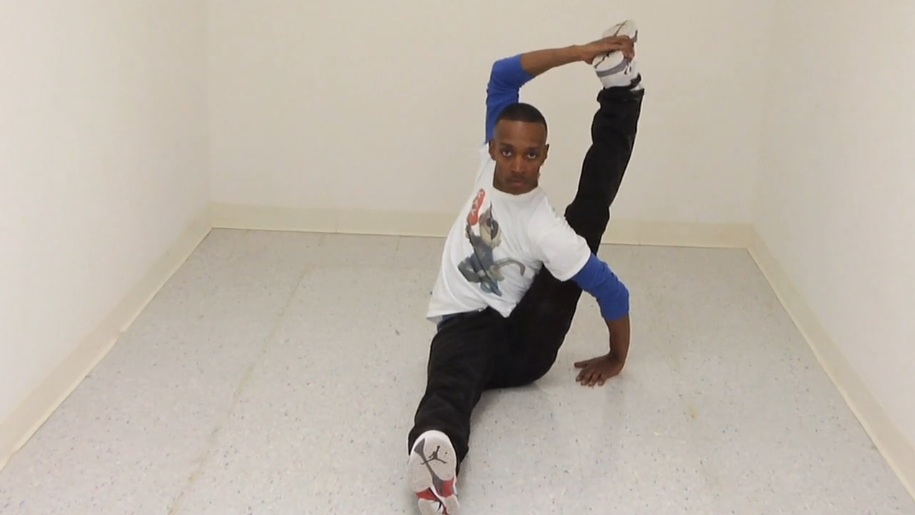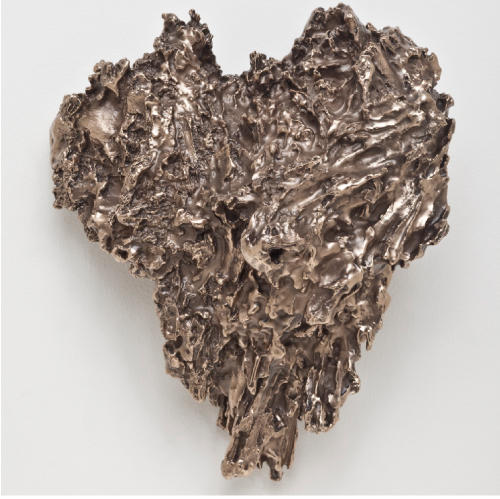Judith Butler, the always agile theorist responsible for Gender Trouble, often says diplomatically dense things like, “a lesbian is what I have been being since college.” She would not say, “I am a lesbian,” nor would she even say “I have been a lesbian.” This might seem tricky, but it’s really not. It is, among other things, an acknowledgment of how much work it takes to be real.
Last week’s Blogger-in-Residence, Evan J. Garza, posted a set of videos by Rashaad Newsome, a multi-media artist whose video and performance work for the current Whitney Biennial takes a high-tech approach to voguing. For one video, Newsome merged footage of multiple dancers into a single body, virtually choreographing a strange, abrasive routine in which a gangly figure in a small white room twists, turns, and splits his body with an almost inhuman degree of composure. The dance never really happened, but it feels like what would happen if someone ever had total control over who they were being: the way the dancer eyes the camera with a carefully composed defiance; the way he makes contortion seem natural; the way his movements have a totally consistent rhythm; the fact that he looks like he could keep moving forever. Garza called Newsome “wholeheartedly real” description is warranted. Newsome must be wholehearted–I can’t imagine anything half-hearted being half this good–and he’s impeccable when it comes to exacting realness. But he never lets us think that being real comes easily.

Rashaad Newsome, still from "Untitled (New Way)," 2009. Silent single channel HD video; 6:48 min. Collection of the artist; courtesy Ramis Barquet, New York.
A pair of current exhibitions in West Hollywood grapple with realness in a less kinetic way. At Regen Projects’s two Almont Drive galleries, Catherine Opie’s crisp seascapes and Liz Larner’s tongue-in-cheek sculptures marry realism and wholeheartedness with a precision that I initially found off-putting. Opie’s photographs, images of sunset and sunrise taken from the deck of a container ship during the ten days it took to get from Long Beach to Korea, are composed so that the horizon line almost always cuts across the image’s center. In a review that went live this morning, LA Weekly’s Christopher Miles pointed to “the neat stack of compositional components and natural elements” in Opie’s series that played out like “an idea set in motion like a machine.”
Larner, too, evinces machine-like consistency, though she would have had to use a different machine for each of her sculptures. They all re-interpret kitsch, ranging from dripping bronze hearts to an “x” built out of metal bars, and an upturned smiley face that looks like a re-purposed leather boot. The diversity doesn’t make each object any less complete and, together, they remind me of SHOWStudio‘s praise of Prada for “her ability to question luxury and subjugate it to her aesthetic whim.”
I was originally drawn to Opie and Larner for work that, at least on the surface, markedly differs from the work in these exhibitions. When I think of Catherine Opie, I still think of the dyke photos, the bleeding back, the S&M, and the nude nursing. But at the same time, I realize one of Opie’s best traits is her un-dramatic refusal to “be” that artist. She’s photographed architecture, landscape, and presidential inaugurations with as much acumen as she has the queer community and she’s a craftswoman as much as she’s an identity prober. Sunset and sunrise, photographed so methodically that the crispness begins to seem unnatural and far-fetched, may not be as racy as an image of domestic bliss carved into a naked back. But the diligence that went into manufacturing these images plays with realness as sincerely as Newsome’s re-choreographed voguing videos do.
Larner, who may not be growing algae in a gallery or banging into infrastructure as she has in the past, has perhaps dug deeper into what she described as her goal years ago, in an interview with Jane Dickson: “the work is about being in the world. Different pieces engage different aspects of this, doing it at the same time as being in it.” “Doing it” should be labor intensive. Being in the world is work, and maybe if you really work it, taking trips across continents to capture the sunset and making smiley faces fetish-worthy, your “doing” will lead to “being” “wholeheartedly real.”






